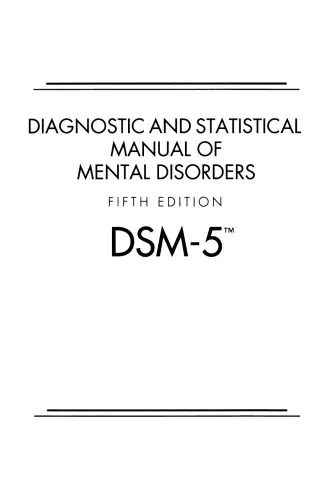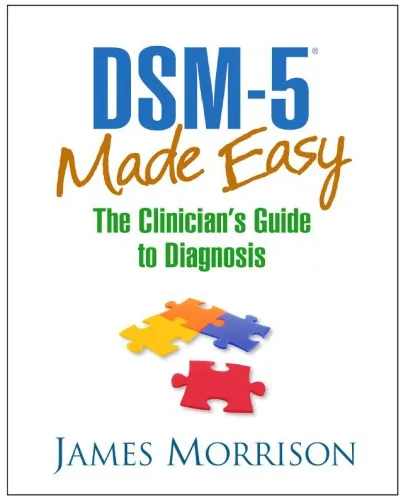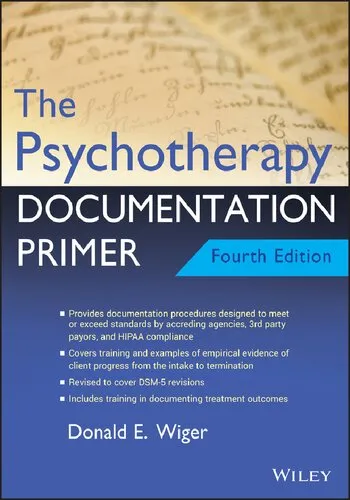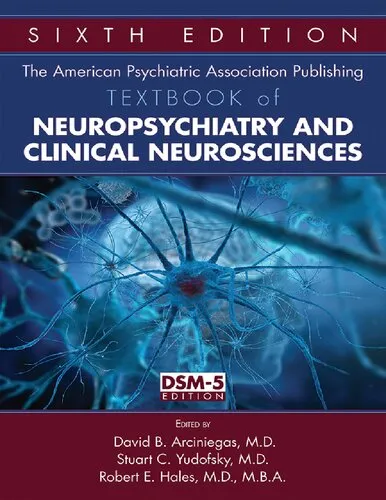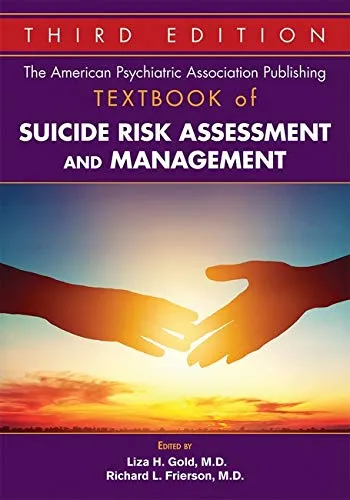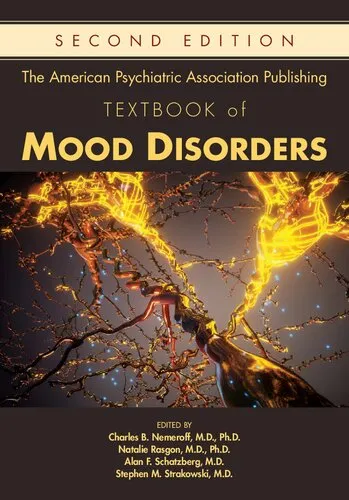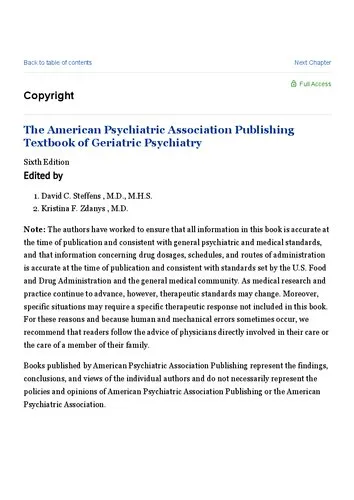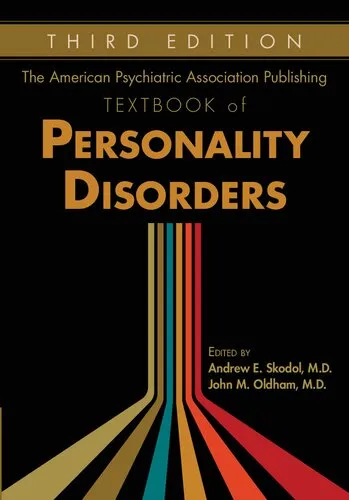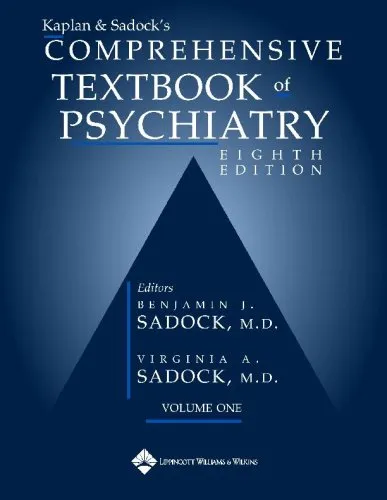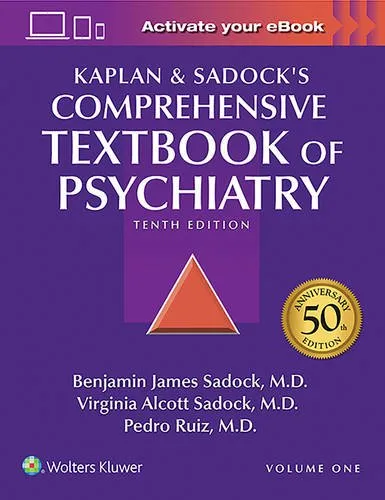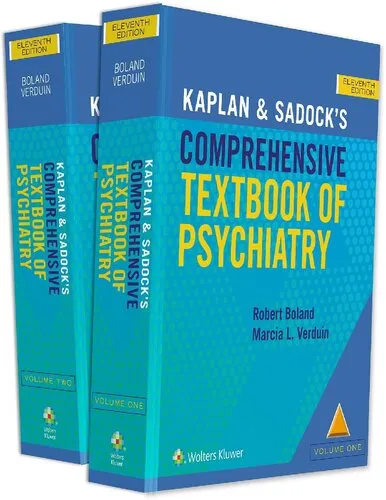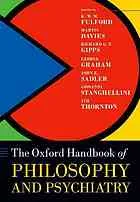Diagnostic and Statistical Manual of Mental Disorders, 5th Edition: DSM-5
4.7
بر اساس نظر کاربران

شما میتونید سوالاتتون در باره کتاب رو از هوش مصنوعیش بعد از ورود بپرسید
هر دانلود یا پرسش از هوش مصنوعی 2 امتیاز لازم دارد، برای بدست آوردن امتیاز رایگان، به صفحه ی راهنمای امتیازات سر بزنید و یک سری کار ارزشمند انجام بدینکتاب های مرتبط:
مقدمهای بر کتاب 'Diagnostic and Statistical Manual of Mental Disorders, 5th Edition: DSM-5'
کتاب Diagnostic and Statistical Manual of Mental Disorders, 5th Edition: DSM-5 یکی از جامعترین و معتبرترین منابع برای طبقهبندی و تشخیص اختلالات روانی است که توسط انجمن روانپزشکی آمریکا منتشر شده است. این کتاب از زمان انتشارش به عنوان راهنمای استاندارد برای پزشکان، رواندرمانگران، و سایر متخصصان سلامت روان در سراسر جهان به کار میرود.
خلاصهای از کتاب
این نسخه از DSM شامل بهروزرسانیها و تغییراتی در طبقهبندی اختلالات روانی است که به منظور تسهیل فرآیند تشخیص و درمان انجام شدهاند. کتاب شامل چندین بخش اصلی است که هر یک بر روی گروه خاصی از اختلالات مانند اختلالات اضطرابی، اختلالات خلقی، اختلالات مرتبط با مصرف مواد و غیره، متمرکز میباشد.
این راهنما نه تنها به تشخیص دقیق اختلالات کمک میکند، بلکه به یافتههای پژوهشی جدید و تکامل درک علمی از اختلالات روانی به شکل جامعی میپردازد. ابزارهای تشخیصی در این کتاب به گونهای طراحی شدهاند که هم کاربرد بالینی داشته باشند و هم با پژوهشهای علمی همخوانی داشته باشند.
نکات مهم
- بهروزرسانی طبقهبندیها و معیارهای تشخیصی برای هماهنگی با یافتههای جدید پژوهشی.
- تمرکز بر ارتباط میان اختلالات روانی و سلامت جسمانی.
- استفاده از ابزارهای سنجش معتبر و قابل اطمینان برای ارتقای دقت تشخیص.
- توجه به فرهنگ و تنوع در تشخیص و درمان اختلالات.
جملات معروف از کتاب
"بهروزرسانی درک ما از اختلالات روانی به وسیلهی تحقیقات و شواهد علمی پایه و اساس پیشرفت علمی است."
"هدف اصلی ایجاد سیستم تشخیصی است که نه تنها برای پژوهشگران که برای پزشکان بالینی نیز کاربردی باشد."
چرا این کتاب مهم است
اهمیت این کتاب را میتوان در تاثیر گستردهای که بر روی کاربردهای بالینی و پژوهشهای علمی در زمینه سلامت روان دارد، مشاهده کرد. این کتاب به عنوان مرجعی جهانی در تعیین و تشخیص اختلالات روانی استفاده میشود و مبنای بسیاری از تحقیقات و مداخلات بالینی قرار میگیرد. همچنین، DSM-5 با فراهم کردن زبانی مشترک برای پزشکان و پژوهشگران، باعث تسهیل همکاریها و مبادله دانش بینالمللی شده است.
این نسخه از DSM، با در نظر گرفتن دقت علمی و تجدید نظر در معیارها و طبقهبندیها، به ارتقای سطح سلامت روانی در جامعه کمک بسزایی میکند.
The "Diagnostic and Statistical Manual of Mental Disorders, 5th Edition: DSM-5" is a monumental publication by the American Psychiatric Association that serves as a critical tool for practitioners in the field of mental health. With its comprehensive classification system, the DSM-5 provides an authoritative guide for diagnosing mental disorders, offering clinicians a common language for understanding and treating these conditions.
Detailed Summary of the Book
The DSM-5 is structured in a manner that categorizes mental disorders systematically. It represents the culmination of over a decade of research, collaboration, and clinical expertise. The manual begins with a section on the structure of the DSM-5, which includes descriptions of the diagnostic criteria and codes. Following this, it delineates disorder classes, each containing specific disorders. These classes include, but are not limited to, Anxiety Disorders, Depressive Disorders, and Neurodevelopmental Disorders. Each disorder is meticulously detailed with diagnostic criteria, features, prevalence, development, risk factors, and differential diagnosis considerations.
One of the most significant updates in DSM-5 compared to its predecessor, DSM-IV-TR, includes the integration of dimensional assessments to capture symptom severity and the addition of cross-cutting symptom measures for comprehensive evaluation. It also introduces a spectrum model for certain disorders, reflecting the growing understanding of the continuum nature of mental health conditions. The DSM-5’s Appendix consists of a glossary of technical terms and cultural concepts of distress that underline the importance of cultural sensitivity in diagnosis.
Key Takeaways
- The DSM-5 introduces new categories and eliminates others, highlighting the need for ongoing research and adaptation in the mental health field.
- Dimensional assessments are integrated to add nuance to the diagnosis, focusing on symptom severity and impairment.
- It recognizes the cultural context of mental illnesses, emphasizing culturally informed diagnosis and treatment.
- Cross-cutting symptoms and spectrum disorders reflect the complexity and interconnectivity of mental health conditions.
Famous Quotes from the Book
"The goals of the DSM-5 are to improve the accuracy and consistency of mental illness diagnoses, guide treatment recommendations, and inform research on mental disorders."
"Understanding mental disorders and how they manifest in different individuals and cultures leads to better treatment outcomes."
Why This Book Matters
The DSM-5 is indispensable for mental health professionals, offering a structured framework for diagnosis, which is a critical step in the treatment process. It bridges the gap between research and practice by embedding the latest scientific findings into clinical application. The inclusivity and adaptability of the DSM-5 make it an essential tool for culturally competent care, acknowledging the vast diversity of mental health experiences across different populations.
Furthermore, the DSM-5 plays a pivotal role in shaping mental health policy and insurance coverage, as many reimbursement processes are contingent on diagnosis as per DSM standards. Its influence extends to education, research, and public perception of mental health, lending credibility and clarity to a complex field.
دانلود رایگان مستقیم
شما میتونید سوالاتتون در باره کتاب رو از هوش مصنوعیش بعد از ورود بپرسید
دسترسی به کتابها از طریق پلتفرمهای قانونی و کتابخانههای عمومی نه تنها از حقوق نویسندگان و ناشران حمایت میکند، بلکه به پایداری فرهنگ کتابخوانی نیز کمک میرساند. پیش از دانلود، لحظهای به بررسی این گزینهها فکر کنید.
این کتاب رو در پلتفرم های دیگه ببینید
WorldCat به شما کمک میکنه تا کتاب ها رو در کتابخانه های سراسر دنیا پیدا کنید
امتیازها، نظرات تخصصی و صحبت ها درباره کتاب را در Goodreads ببینید
کتابهای کمیاب یا دست دوم را در AbeBooks پیدا کنید و بخرید
1583
بازدید4.7
امتیاز0
نظر98%
رضایتنظرات:
4.7
بر اساس 0 نظر کاربران
Questions & Answers
Ask questions about this book or help others by answering
No questions yet. Be the first to ask!
